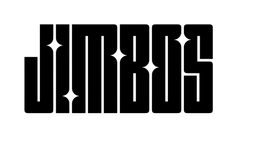How to Choose the Right Polish for Your Car
A Simple Guide for Swirl Removal, Gloss, and Correction
Choosing the right polish can be the difference between professional-level results and wasted time. Whether you want to remove swirls, add gloss, or do a one-step correction, this guide breaks down how to choose the right polish for your paint and goals.
Step 1: Assess Your Paint Condition
Take a close look at your paint under direct light. Are you seeing:
- Light swirls or haze? Go with a one-step polish.
- Moderate swirls or minor scratches? Use a light compound or cutting polish.
- Heavy oxidation or deeper defects? You’ll likely need a compound and follow-up polish.
For most daily drivers, a one-step polish like Picture Perfect Polish is more than enough.
Step 2: Consider Your Time and Experience
If you're new to polishing or want to save time, avoid multi-step products. Choose a polish that’s easy to work with and doesn’t require a follow-up step. A high-quality one-step polish will cut and finish in one pass with the right pad.
Experienced users working on soft or high-end paint might prefer separate compound and polish stages for full control.
Step 3: Match Your Pad and Machine
Some polishes are pad-dependent—like Picture Perfect Polish—meaning you can adjust the cutting or finishing performance by simply changing the pad.
- Foam polishing pad = light correction, great finish
- Cutting pad = stronger correction, moderate finish
- Finishing pad = gloss enhancement only
If you’re using a dual action polisher, choose a polish formulated for that tool type to avoid issues with dusting or wipe-off.
Step 4: Know When to Skip the Compound
Too many people jump to compounds when they’re not needed. If your paint is in decent shape, a medium or one-step polish can safely remove the defects without thinning your clear coat unnecessarily.
Unless you’re correcting sanding marks or deep defects, reach for a polish first and only step up if needed.
Step 5: Look for a No-Dust, Easy-Wipe Formula
Not all polishes are created equal. Choose one that:
- Produces little to no dust
- Wipes off easily with a microfiber towel
- Finishes clean without oily residue
Picture Perfect Polish checks all those boxes—making it beginner-friendly and pro-ready.



